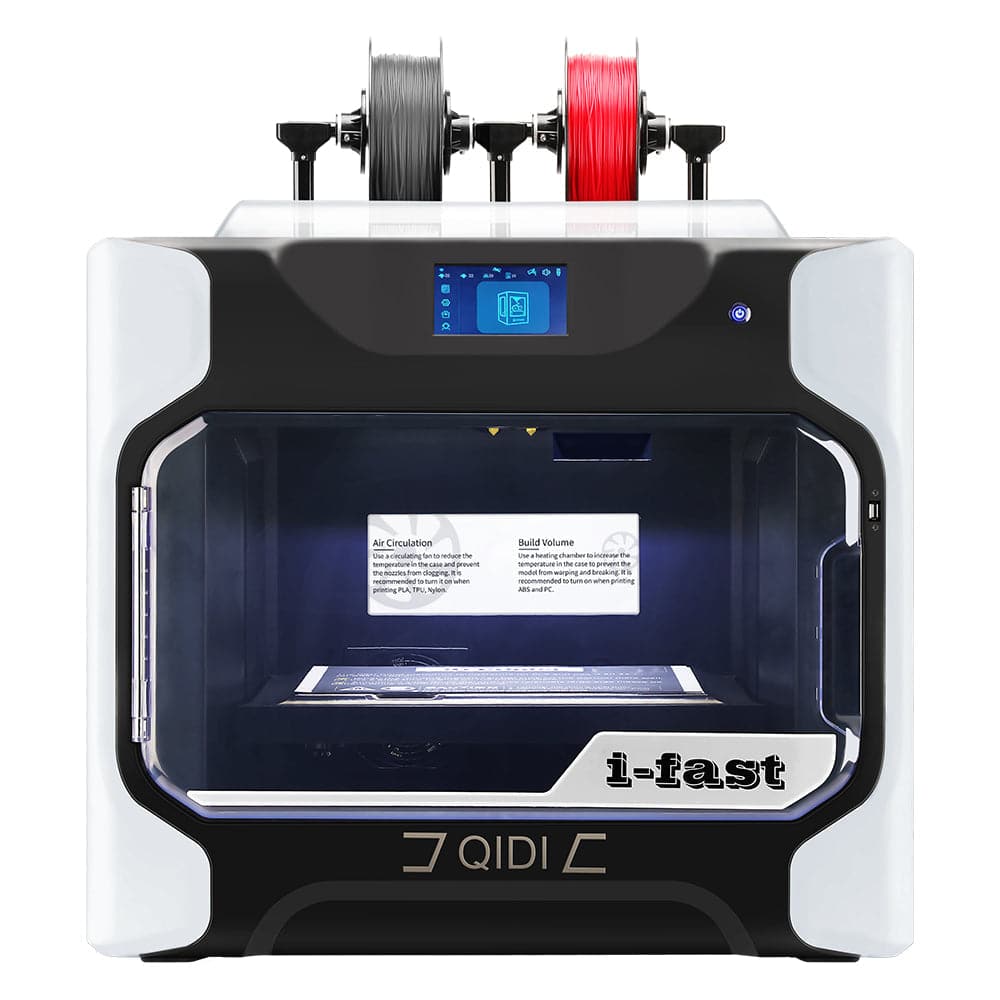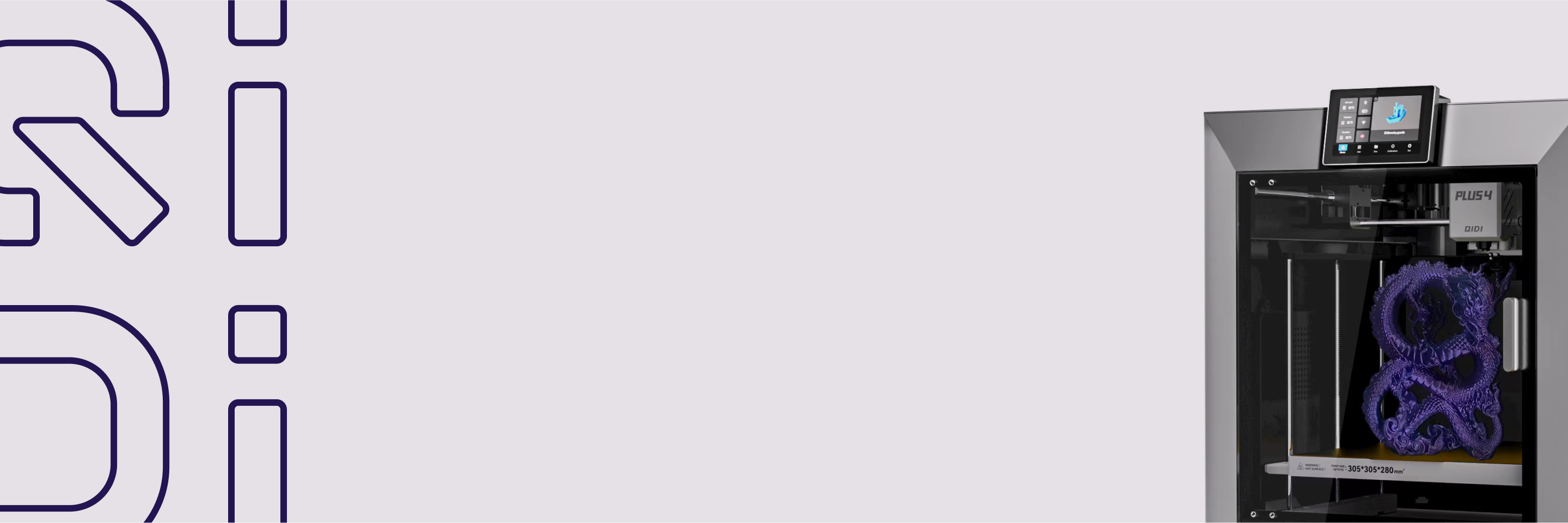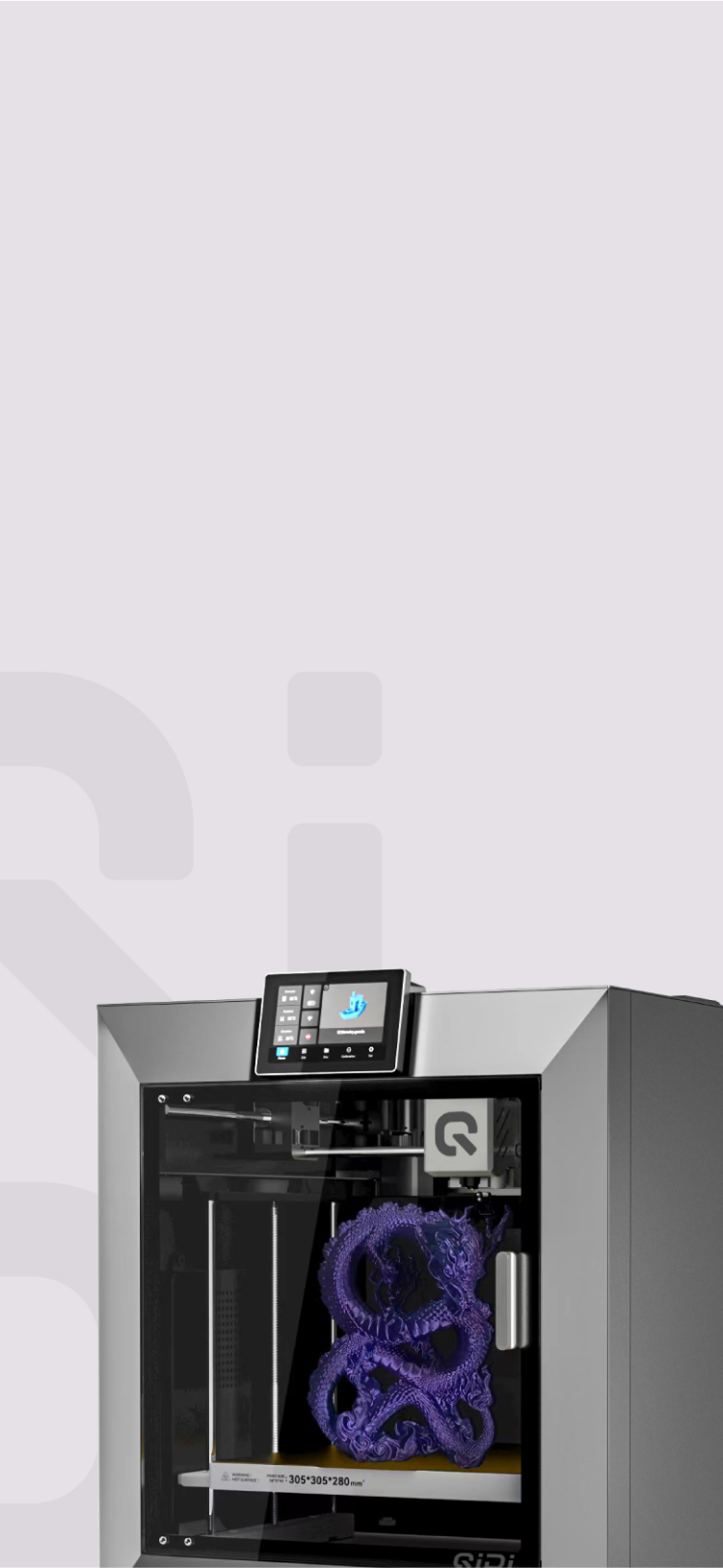[レビュー]新しいQidi Plus4-たぶん完璧な3Dプリンター!

![[Review]NEW QIDI PLUS4 - Maybe the PERFECT 3D Printer!](http://uk.qidi3d.com/cdn/shop/articles/Snipaste_2024-10-29_14-47-33_520x500_9ac53a84-ae69-4f99-956d-9fc0132f5312.png?v=1736493462&width=1600)
👤 心:この記事は、3Dプリント愛好家Loyal Moses氏の人気YouTubeチャンネルから引用したものです。このレビュー動画では、業界最先端の機能を備えた3DプリンターQidi Plus 4について詳しく解説し、その権威あるレビューを通して、視聴者は製品の詳細な分析と使用感を体験することができます。Qidi Plus 4は、370℃のホットエンド、400Wの加熱チャンバー、そして広々とした造形容量を備え、ヘルメットサイズから小さなアクセサリーまで、様々なプロジェクトに対応できる優れた造形能力を備え、市場で際立った存在となっています。
スタジオへようこそ。今日は、これまでスタジオでテストした中で最も印象的な3Dプリンターの1つである チーディプラス4このマシンは、ありきたりの退屈な 3D プリンターではありません。370°C のホットエンド、400 W の加熱チャンバー、ヘルメットから小さな装飾品まで、あらゆるサイズのプロジェクトに最適な印象的な造形ボリュームなど、産業用のハイエンド機能を満載した強力なマシンです。
初心者の方、趣味の方、あるいはプリントファームを運営している方など、このマシンには気に入る点がたくさんあります。ぜひ最後までお付き合いください。これからこのマシンの全てを詳しく解説し、最終的な感想とQIDIの今後の展望についてお話しします。また、ご興味のある方は価格に驚かれることでしょう。QIDIでは早期購入特典もご用意しており、詳細は動画の最後に掲載します。

Qidi Plus 4が3Dプリンター市場で際立つ理由
さて、まずは、競争の激しい 3D プリンター市場で Qidi Plus 4 が際立っている理由から見ていきましょう。
多用途で高性能な印刷を実現する高度なホットエンド技術
- 工業グレードの高温ホットエンド:この機械の心臓部は、PPSカーボンファイバーなどの幅広い性能材料を処理できる370°Cのホットエンドです。 ABS PTGとさえ その他の強化ポリマー グラスファイバーやカーボンファイバー、ケブラーなど。このホットエンドはただ熱くなるだけではありません。QIDIの最新セラミックスロートを採用し、精度と安定性を追求してゼロから設計されているため、カジュアルユーザーにも本格的な機能を求めるユーザーにも最適です。
- ホットエンドには 400 ワットのチャンバー ヒーターが組み合わされています。最高65℃まで温度が上がり、この機能は本当に画期的です。以前QIDIの他のマシンでもこの機能についてお話ししましたが、この機能によって、扱いにくい高温材料を印刷できるようになります。 最小限の反り。
印刷の歪みに対する解決策
紙幣プレート上の印刷物が剥がれたり変形したりすることに悩まされたことがあるなら、これは 加熱室 大きな違いが生まれます。重要なのは、最初から最後までプリントをサポートする安定した環境を作ることです。通常のフィラメントを使用する場合でも、チャンバーヒーターは最終的なプリント結果に大きな違いをもたらし、プリントの反りをほぼ完全に解消します。
美的に プラス4 3Dプリンターのサイバートラックとも言えるでしょう。かなり大胆で、非常に角張っていて、そして 未来的な洗練されたインダストリアルデザインで、オールメタルのフレームと相まって、まるで80年代のSF映画から飛び出してきたかのような印象を与えます。最近はこれに似たマシンが多く、正直に言うと最初はあまり魅力を感じませんでした。箱から出して「おお!」と思ったくらいですが、スタジオで数週間使ってみて、かなり印象的で、だんだん好きになってきました。だんだん好きになってきました。

未来的でインダストリアルなスタイルを備えたユニークな外観デザイン📦
このプリンターのシャープなラインと圧倒的なサイズこそが、市場に出回っている他のプリンターとは一線を画す、他に類を見ない独特の美しさを生み出していると思います。そして、サイバートラックの比喩をもう少し深掘りすると、Plus 4のデザインは見た目のカッコよさだけではないと言えるでしょう。おそらく、フォルムよりも機能性を重視していると言えるでしょう。このプリンターは堅牢で、2人で持ち運べるほどの頑丈さを誇り、格納式ハンドルから頑丈な内部フレームに至るまで、あらゆるデザインが工業的な革新性を物語っています。「さあ、仕事に取り掛かろう」という雰囲気、存在感を放っています。スタジオに入ってこのプリンターを見ると、毎回プリントするのが待ち遠しくなります。
デュアルモータードライブシステムと自動ベッド傾斜・水平調整機能
これまでのQIDIモデルと比較して、Plus 4はいくつかの重要なメカニカルアップグレードを導入しています。デュアルモーター駆動システムを搭載し、 自動ベッド傾斜水平調整これにより、プリントの寸法精度が維持され、信頼性も向上します。もう手動でベッドのレベリングを行う必要はありません。もちろん、自動Zオフセット機能も搭載されているので、プリントを開始したらそのまま放置しておけます。
優れた印刷速度と印刷品質
さて、ベルトについて少しお話しましょう。このプリンターは、自動で張力が調整される非常に頑丈な9mmベルトを採用しています。つまり、手動で調整する必要はありません。これらのベルトは単に厚いだけでなく、Plus 4が対応できる高速・高加速度に耐えられるように設計されています。高速とは、最大600mm/秒、最大20,000mm/秒の加速度を意味します。ちなみに、市場に出回っている他の多くの3Dプリンターは6mmベルトを使用しています。
ビルドプラットフォームは厚さ6mmのアルミ板です。頑丈で、熱を均等に分散するように設計されており、高温のフィラメントを扱う際には非常に重要です。QIDIでさえ、プリント前に数分間温めて熱を吸収させることを推奨しており、私の経験から言うと、この少しの辛抱が大きな効果を発揮します。
多様なリンクオプションと優れたユーザーエクスペリエンス
加熱ベッド自体は最高120℃まで加熱できるため、幅広い材料を接着の問題なく処理するのに十分な温度です。次に接続性について見ていきましょう。QIDI Plus 4にはUSBポートが付属しており、昔ながらのスティック型デバイスでファイルを直接転送できるほか、Wi-Fiやイーサネット接続も可能なので、どんな印刷環境でも安心してご利用いただけます。5インチHDタッチスクリーンは高速で応答性が非常に高く、操作も簡単です。インターフェースは非常に直感的で、あらゆる操作が指先で操作でき、遅延もなく、レスポンスも非常に良好でした。

インターフェースを使ってフィラメントを交換するのはとても簡単で、これまでの3Dプリントの中でも最高の体験の一つだと感じました。プリントを一時停止し、アンロード、リロード、そして再開ボタンを押すだけで、すべてが完璧に処理されました。QIDI PLUS 4の最も優れた点の一つは、アップデートされたQIDIスライサーのユーザーエクスペリエンスです。シンプルで高速、そして直感的に操作できるよう微調整されています。誰でもかなりうまく使えると思います。プロファイルに関しては、すぐに使えるフィラメントが多数用意されていますが、私に送られてきたPPS CF用のプロファイルがなかったので、QIDIに直接連絡してカスタムプロファイルを依頼しました。QIDIからメールで送られてきたプロファイルを元に、素晴らしいプリントができました。
PPS CF 非常に丈夫で耐熱性に優れた素材で、反りにくく、湿気をあまり吸収せず、印刷中に有害な毒素を放出しません。これは非常にユニークなフィラメントで、通常はガラス繊維や炭素繊維で強化されています。純粋なフィラメントだとかなり脆いからです。これらの添加剤を加えることで、非常に優れたフィラメントとなり、おそらくそれが一気に人気が高まった理由でしょう。
良好なビルドボリューム🛠️
さて、マシンの性能、例えば造形ボリュームなどをテストしたかったので、スター・ウォーズの不良品レッカーヘルメットを出力してみました。ただし、通常のフィラメントではなく、PolymakerのPPS CFフィラメントを使用しました。これは単なる簡単なテストではなく、本格的な出力でした。フィラメントが2スプール近く(1スプールあたり約70ドル)必要でした。約140ドルという高額なプロジェクトで、約1日半かかりましたが、結果はその費用に見合うものでした。ヘルメットは驚くほど素晴らしい出来栄えで、本当に感動しました。この驚異的な表面品質と精緻な造形をご覧ください。
ヘルメットの真ん中あたりに少し変色がありましたが、これはフィラメントのスプールを2つ、何ヶ月も間隔を空けて注文したからでした。この変色はフィラメントのバッチの違いや色の違い、あるいはわずかな湿度の違いが原因かもしれません。とにかく、素晴らしい出来栄えだと思います。見てください。ああ、トップレイヤーをもう1層追加してもよかったかもしれません。ヘルメットの頭頂部まで届いているように見えます。確かに、その部分はもう少しきれいにできたかもしれませんが、これはプリンターやフィラメントの問題ではなく、私の問題です。ヘルメットの頭頂部がそうなっているのを知っていたので、スライスしてもう1層追加すべきでした。

さて、QIDIのPPS CFで戦艦ベンチのプリントと調整にも少し時間を費やしました。プリンターの温度を330℃から370℃まで上げながら、いろいろ試しました。こうした小さなプリントはただ楽しいだけでなく、設定を調整して、異なる温度で材料がどのように反応するかを見るのに最適な方法でした。当然ながら、330℃では層の接着力が350℃の時とは全く違うことがわかりました。そして、370℃はとんでもなく高温でした。どれくらい高温かご存知ですか?ホットエンドで370℃というのは常軌を逸した高温で、これによって材料の可能性は驚くほど広がります。しかも、自宅のマシンでこんな高温を実現できるなんて、本当にすごいことです。
QIDIからガラス繊維入りABSも送ってもらったので、紫と緑の素晴らしいプリントができました。色鮮やかで、プリント品質も完璧でした。QIDIが同梱していたガラス繊維入りABSフィラメントのプロファイルはまさに圧巻で、文字通りフィラメントを選んでセットし、プリントボタンを押すだけで、まさに素晴らしい体験でした。これは素晴らしいプロトタイピングマシンになるでしょう。きっとそう確信しています。研究室や作業場に置かれているのが目に浮かびます。筐体は埃や塵、ゴミの侵入を防ぎ、 活性炭 背面上部のフィルターが臭いを軽減してくれます。ドアと蓋を閉めた状態では特に大きな音は出ないので、ご家庭やオフィスでの使用であればそれほど気になりませんが、動作中は気になりません。他のプリンターと比べると、中程度の音域に入ると思います。
スムーズな操作のための革新的な機能
PPSFの柔軟性と剛性を確かめるため、カラビナもいくつか印刷してみました。ほぼ完璧に近い出来栄えだと思います。実際に試している様子を見たい方は、ぜひ「いいね!」と「チャンネル登録」ボタンを押してください。このカラビナの1つ、あるいは複数に牽引ストラップを数本接続してトラックを牽引し、その耐久性を検証してみようと思っています。QIDI Plus 4は、物理的に巨大なマシンです。約505mm x 487mm x 550mmと、まさに戦車のような大きさなので、設置にはある程度のスペースが必要ですが、その分、優れた性能でそれを補っています。持ち運びしやすいように、QIDIは上部に2つの格納式ハンドルを巧みに組み込んでいます。このような小さな工夫から、QIDI がユーザー エクスペリエンスについてあらゆる角度から考えていることがわかります。特に、このようなものを移動させる必要がある私たちコンテンツ クリエイターにとって、これは大きなメリットです。このデバイスはこれまでに 20 回ほど移動されています。
ドアと蓋はガラス製で、内部の超高輝度LEDライトのおかげでプリンター内部の眺めは抜群です。自宅でプリント結果を見るのはもちろん、撮影現場でも素晴らしい映像を撮影できます。さらに、このプリンターにはツールヘッドにフィラメントカッターとノズルワイパーが搭載されており、フィラメント交換が素早くきれいに行えます。さらに、フィラメント切れセンサーと絡まり検出センサーも搭載されています。これで、パワフルなだけでなく、これらの機能も非常に信頼できるプリンターが完成しました。
プリントの仕上がりを常にチェックしたい方には、HDカメラでリモートモニタリングやタイムラプス撮影ができます。ちょっとした追加機能として、とても楽しいと思います。タイムラプス撮影をしてソーシャルメディアで共有したり、部屋にいなくても長尺プリントの仕上がりを確認したりするのに最適です。
QIDI Plus 4の際立った特徴の一つは、その幅広い訴求力です。これは、初心者から熟練の愛好家、さらにはプリントファームやプロトタイピング環境まで、あらゆるユーザー向けに設計された、スタジオで初めて目にしたマシンの一つです。まるで 初心者向けの産業用3Dプリンター; 素晴らしいです。PLA、ABS、ASA、PGS、TPUなど、幅広い材料に対応しており、 ポリカーボネート、強化ポリマーなど、あらゆることができる機械です。
注目すべき点があります。このマシンはフィラメントを背面から排出し、ツールヘッドにフィラメントカッターを内蔵しています。これは、QIDIがマルチカラー印刷への道を切り開いていることを示唆しています。QIDIが確実に革新を続けていることは明らかで、将来のモデルやこのモデルのアップグレードでさらに高度な機能が搭載されても驚きません。では、結論から言うと、QIDI Plus 4は間違いなく私がテストした3Dプリンターの中で最も印象的なプリンターの一つです。汎用性が高く、信頼性が高く、初心者から上級者まで、あらゆるニーズに応える豊富な機能を備えています。
結論🎉
チーディ 単に追随しているのではなく、彼らはこの分野をリードし、素晴らしい成果を上げています。Plus 4は、彼らの品質と革新への取り組みの好例です。多くの3Dプリンターが同じような方向に向かっているのではないでしょうか。簡素化、コスト削減、小型化を進めています。QIDIは全く逆の方向へ進んでいます。ハイエンドの産業用機能を採用していますが、決して手抜きをしているとは思いません。彼らは、これらの機能を家庭やオフィスで使える市場に投入する方法を何とか見つけ出しているのです。これは素晴らしいことです。
ヒーターと370℃まで加熱できるホットエンドを内蔵し、価格も799ドルという同等のマシンについて、下のコメント欄に書き込んでください。おそらく無理だと思います。これは信じられないほど優れたマシンで、しかも価格も信じられないほど素晴らしいです。ネガティブな点については、公平な印象を与えようとして、簡単に手に入るネガティブな意見を言う人が本当に嫌いです。つまり、良い点を10個言わないといけないのに、公平だと思ってもらうためには悪い点を3つ言うほうがいい、という感じです。スプールホルダーの位置について文句を言うのと同じようなもので、スプールホルダーの位置で3Dプリンターを選ぶ人はいないと思います。だって、あれはただのスプールホルダーですから、移動させたり、別のものに交換したりできますからね。

ユーザーエクスペリエンス✨
私は、3D プリンターに関しては完全な現実主義者なので、何かがひどいものや使えないものであれば、間違いなく皆さんと共有します。このマシンを何ヶ月も断続的に使ってきましたが、特に変えたいと思う点が思い当たりません。実際、QIDIからフィードバックを求めるメールが何度も届きましたが、「本当に素晴らしい」としか言えませんでした。それしか言えませんでした。特に変えたいと思うような建設的な点はありませんでした。3Dプリンターはどんどん進化していて、勢いづいています。機能もどんどん進化し、性能も向上しています。これからどんな進化が見られるのか、今から楽しみです。
さて、Plus 4についてどう思いますか?このマシンのような3Dプリンターは正しい方向に進んでいると思いますか?それとも、別の方向を見たいですか?下のコメント欄で教えてください。もし批判的な意見があれば、ぜひ教えてください。QIDIはコメントを読みますし、QIDI自身も必ず読みます。いいね、チャンネル登録、ベルの押し忘れもお忘れなく。そうすれば、新しい動画を投稿するたびに、いつでも最新情報を見逃すことはありません。そして、YouTubeメンバーとPatreonサポーターの皆様の継続的なサポートに心から感謝いたします。皆様のご協力なしには、ここまで来ることはできませんでした。
ご視聴ありがとうございました。Twitchで誰かが私のライトで遊んでいる動画です。ご視聴ありがとうございました。それでは次回の動画でお会いしましょう。いいですね、見てください。それから、真ん中にBロールを入れておきます。サポートを外しているところです。その様子がわかると思います。実は、この動画を見る前に、Bロールも見ているはずです。本当に楽しいマシンですね。本当にクールです。さて…


 プラス4
プラス4



 テック
テック 
